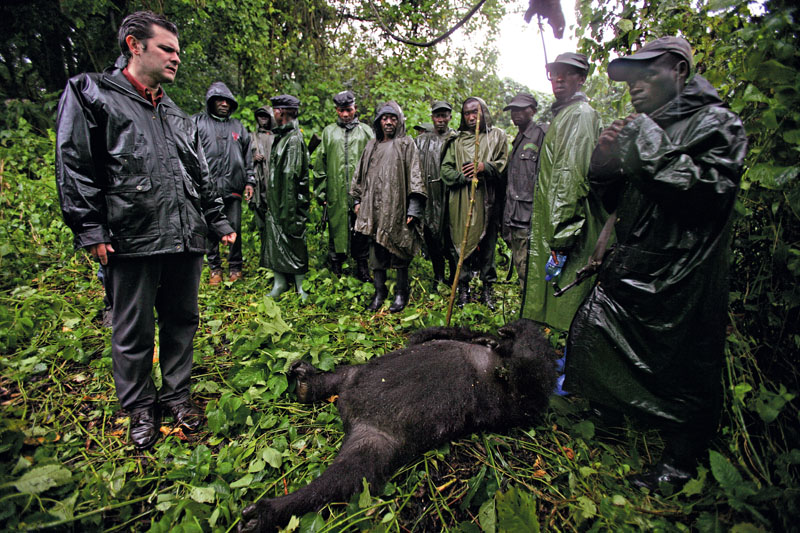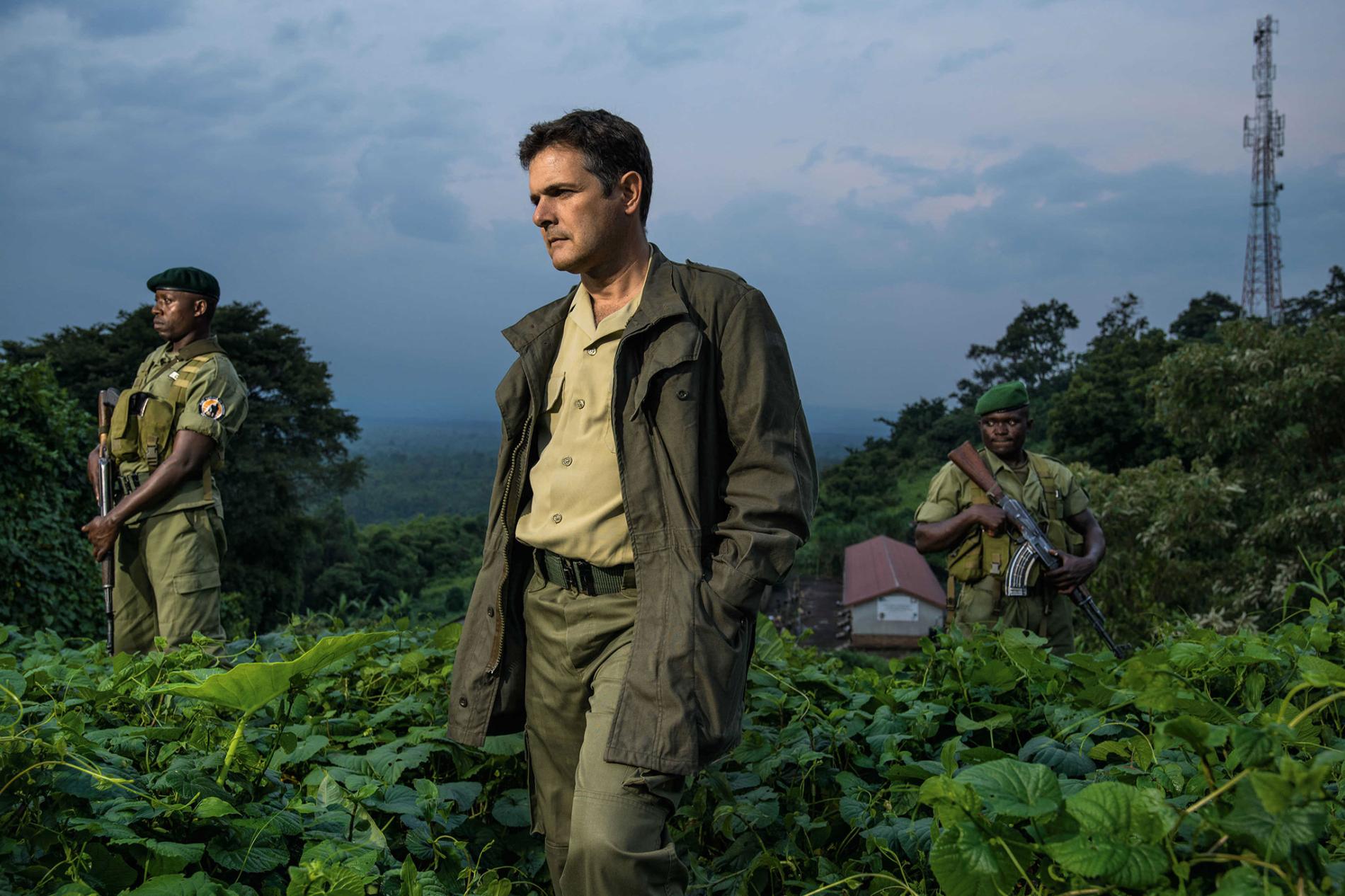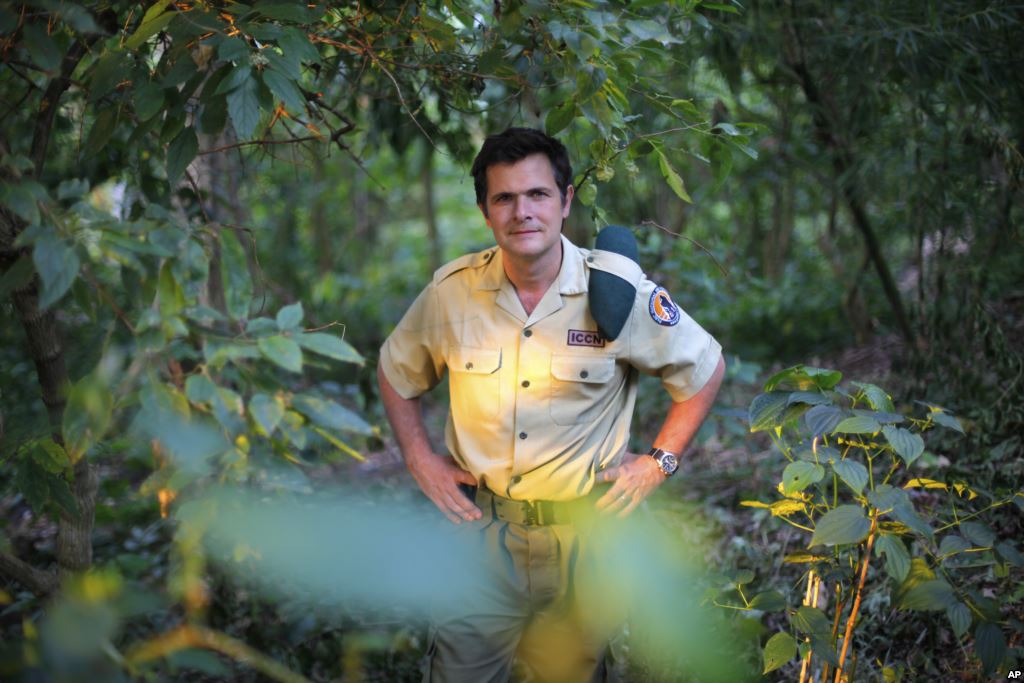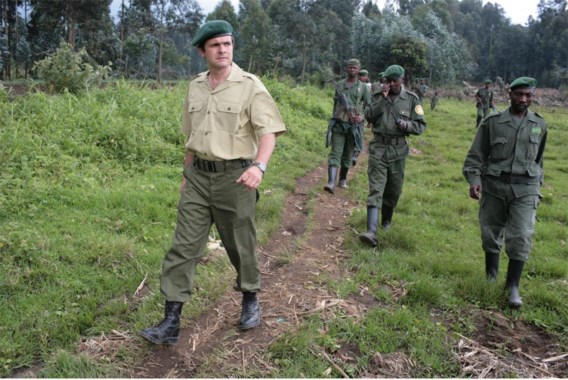Emmanuel de Merode
Conservationist and Park Warden, DRC
Emmanuel de Merode - Park Warden, Virunga NP
Emmanuel de Merode - Anthropologist | Conservationist | Protector
Prince Emmanuel de Merode (born 5 May 1970) has been the director of the Virunga National Park in the Democratic Republic of the Congo (DRC) since 2008.
Merode was born in North Africa, at Carthage, Tunisia, and spent his childhood in Kenya. He is the second son of Charles Guillaume, Prince de Merode, and of his wife Princess Hedwige de Ligne (sister of Charles-Antoine, Prince de Ligne de La Trémoïlle). His parents[1] belong to two of Belgium's historically most ancient and influential families. Emmanuel de Merode does not use his hereditary title in professional contexts, however he is legally a prince in the Belgian nobility, the title having been conferred upon the family by King Albert I in 1929. He has a PhD in Anthropology from University College London, on Congolese conservation issues. Anthropologist, conservationist, pilot, he worked to control the bushmeat trade and protect endangered wildlife in Central and Eastern Africa. His main focus has been support for African wildlife rangers in remote and difficult national parks and reserves. His work was primarily in the parks of eastern DRC, working to sustain the national parks through the DRC's 10-year civil war. Author of fourteen scientific papers and co-editor of the book Virunga: The Survival of Africa's First National Park. On 1 August 2008, he was appointed by Congolese Government as Director for Virunga National Park. After swearing allegiance to the Congolese flag, he became the only foreign national to exercise judicial powers in the war torn central African nation. He now lives at the park headquarters in Rumangabo, bordering the park's mountain gorilla sector. The park's 680 rangers fall under his command and much of his work is focused on protecting the park's exceptional wildlife, that include a critically important population of Mountain Gorillas, elephants, okapis and chimpanzees. His first breakthrough was to broker an agreement between the Congolese Government and Rebel Leader Laurent Nkunda to spare the Mountain Gorilla Sector of the Park from the rages of the ongoing civil war and to enable government rangers to redeploy in rebel territory. Negotiating the neutral status of environmental and sustainable development imperatives among the warring factions in eastern Congo became a recurring theme in de Merode's approach to establishing Virunga National Park as a stabilizing presence in the war affected Great Lakes Region of Africa. Given the chronic insecurity and the succession of violent wars in eastern Congo, de Merode has focused his efforts on economic development initiatives that bring greater stability to the region. In 2013 he assisted in the launching of the Virunga Alliance in an effort to drive the post-war economy of eastern Congo as an instrument for peace-building in the region. The initiative is based on 127 local institutions from the private sector, civil society and government agencies committing to the sustainable development of the parks resources, through tourism, rural electrification, sustainable fisheries and agriculture. A major program is now underway that aims to generate 80 to 100,000 employments in the post-war communities living around the national park, providing young Congolese men and women viable alternatives to engaging in conflict related activities. At his swearing in ceremony, Merode remarked, "The intensity of the conflict in and around the park makes this a daunting challenge, but it is a great privilege to be working alongside such a dedicated and courageous team of rangers. I have real confidence in our ability to secure a future for the park to ensure that it makes a positive contribution to the lives of the people of North Kivu." He has spoken about his work and the work of the rangers of Virunga in a TEDxWWF talk, "A story of conflict, renewal and hope". Under his leadership, the Virunga park opened for business again in 2014. On 15 April 2014 Emmanuel de Merode was seriously injured by unidentified gunmen during an ambush on the road between Goma and Rumangabo. He was shot several times in the chest and abdomen, but survived and was able to leave the scene of the attack with the help of local residents. Emergency surgery was performed at a local hospital in Goma. A legal enquiry into the motives and identity of the attackers was undertaken by the Congolese authorities. Media reports have cited various suspects including charcoal traders and people associated with a British oil company attempting to illegally explore for oil in the national park. He returned to Virunga National Park on the 22nd of May 2014 to resume his functions as Park Director.Source: wikipedia.org/
GO BACK TO: People on the frontline
Articles about Emmanuel de Merode
Battle for Virunga: The fight to save Africa's oldest national park - Sept 2014
EMMANUEL DE MERODE INTERVIEW - April 2017
Six Virunga park rangers killed in DRC wildlife sanctuary - April 2018.
Young Orphaned Gorillas: See Their Adorable Bond With Park Rangers (video) - June 2016.
History of Virunga NP
Throughout its history, Virunga has been deeply affected by the country’s political climate. The park has endured many periods of armed conflict. The deep commitment of Virunga’s rangers, key politicians, conservationists, and concerned individuals around the world have enabled the park to survive.
The park was founded in 1925 by King Albert I of Belgium and was originally given his namesake, Albert National Park. Parc Albert was the first national park to be established on the continent of Africa, largely from the tireless lobbying of an American biologist, Carl Akely, who committed his life to the protection of Virunga’s Landscapes, and who subsequently died and was burried in the Park. It was founded primarily to protect the mountain gorillas living in the forests of the Virunga Massif. Parc Albert was later expanded northward to include the Rwindi plains, Lake Edward and the Rwenzori “Mountains of the Moon”. The park was renamed Virunga National Park in 1969. Over the past 20 years, Virunga’s rangers have endured an almost uninterrupted series of challenges. In 1994, the Rwandan genocide unleashed a flood of more than one million refugees who placed tremendous pressure on the park forests and wildlife. In 2007, members of an illegal charcoal mafia murdered a family of mountain gorillas. The event was arguably the park’s darkest hour in over a decade. Their motivation was simple: kill the mountain gorillas and there will no longer be a reason to protect the park. By the end of the year, nine critically endangered mountain gorillas had been murdered. After the 2007 gorilla killings, the park embarked on a comprehensive reform programme, involving the restructuring and strengthening of its ranger force to effectively protect the park’s wildlife and habitats, together with a major initiative, referred to as the Virunga Alliance, to deliver effective economic development and stability for the populations living around the park. The work was largely funded through public and private support, including the European Union and the Howard G Buffet Foundation. Since then, the programmes were sustained uninterrupted through two civil wars, but at a considerable cost to the park’s staff. Peace has returned to Virunga, and once again, the park is open to tourism. New tourist activities are being developed and the park now offers high-end lodging conveniently located near the center of the three main tourist attractions: the mountain gorillas, Tongo chimpanzees, and Nyiragongo volcano. Virunga National Park is a UNESCO World Heritage Site in the eastern Democratic Republic of Congo, on the border of Uganda and Rwanda. Virunga is Africa’s oldest national park and is also the continent’s most biologically diverse protected area. The park’s 7800 square kilometers (3000 square miles) includes forests, savannas, lava plains, swamps, erosion valleys, active volcanoes, and the glaciated peaks of the Rwenzori mountains. Virunga is home to about a quarter of the world’s critically endangered mountain gorillas. The park’s two other Great Ape species, eastern lowland Grauer’s gorillas and chimpanzees, make Virunga the only park in the world to host three taxa of Great Apes. Another prominent inhabitant of the park is the Okapi, an endangered species that resembles a zebra but is more closely related to the giraffe. Large colonies of hippopotami, forest and savanna elephants, lions, and numerous rare bird species can also be found in the park.Source: wikipedia.org/



